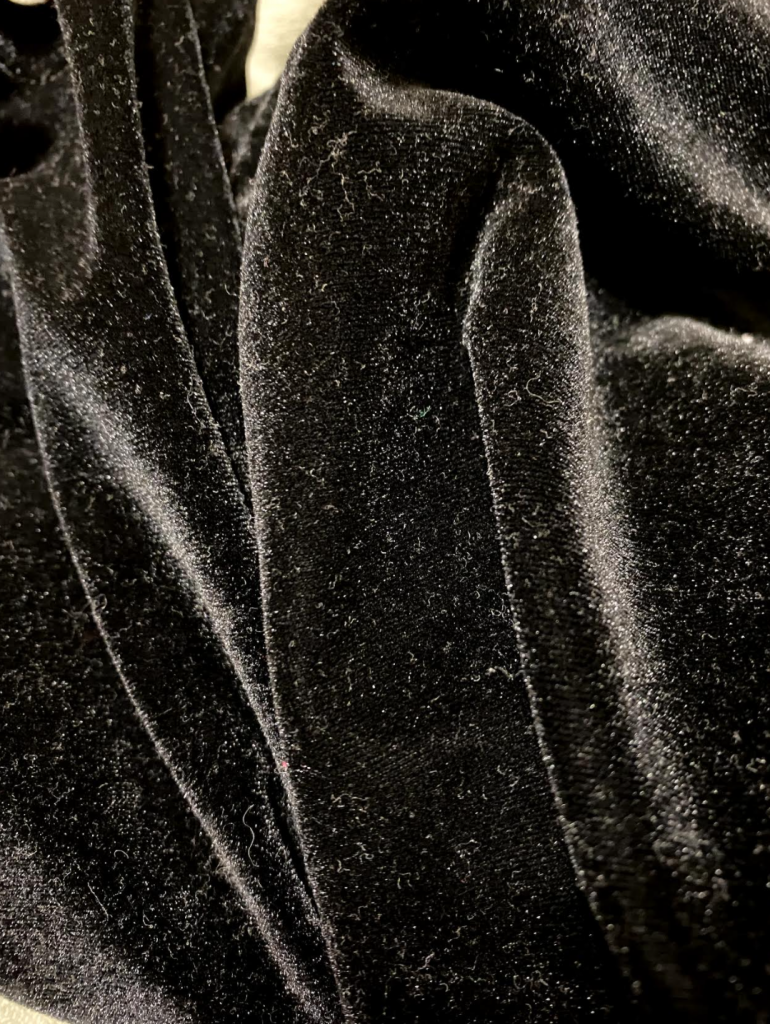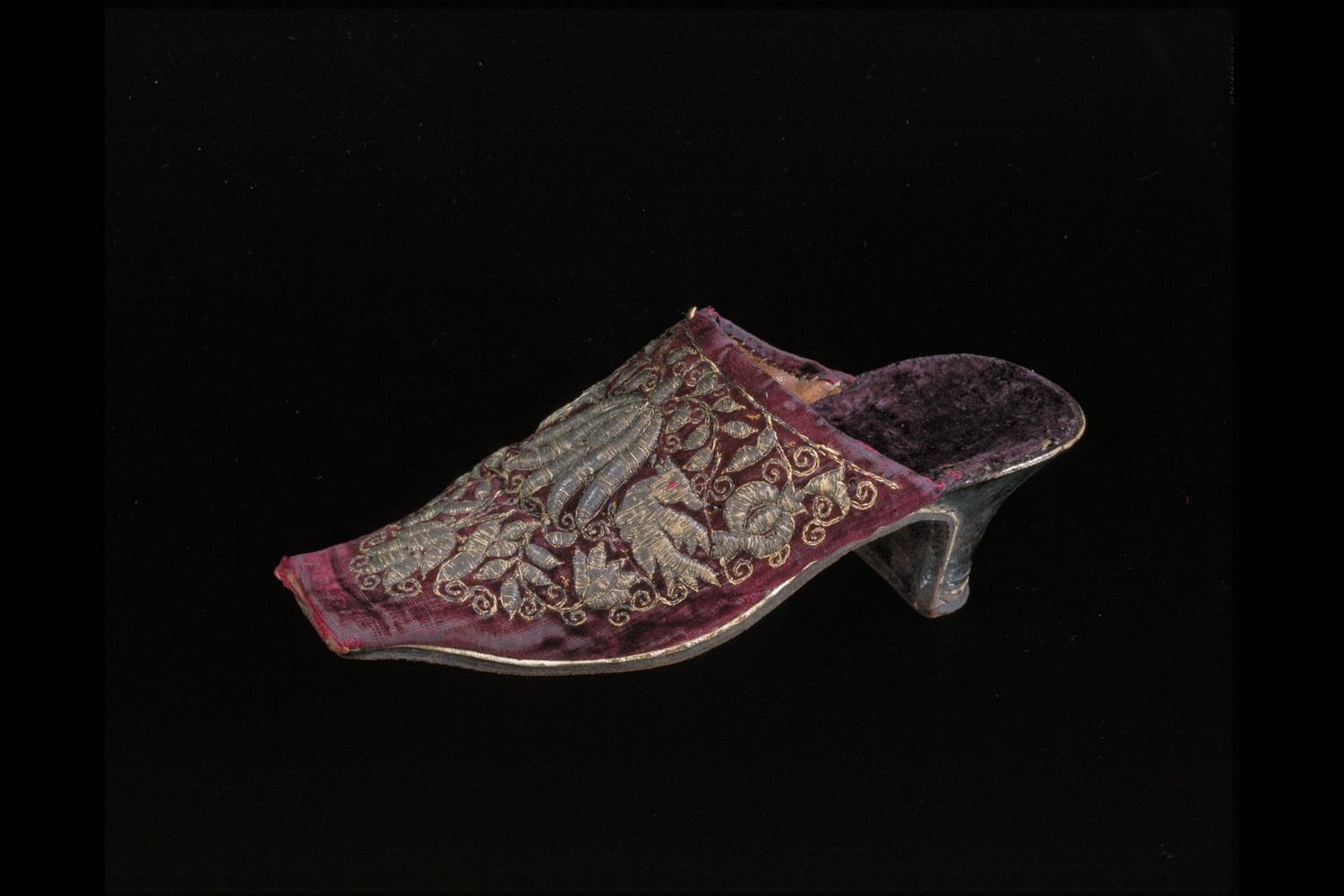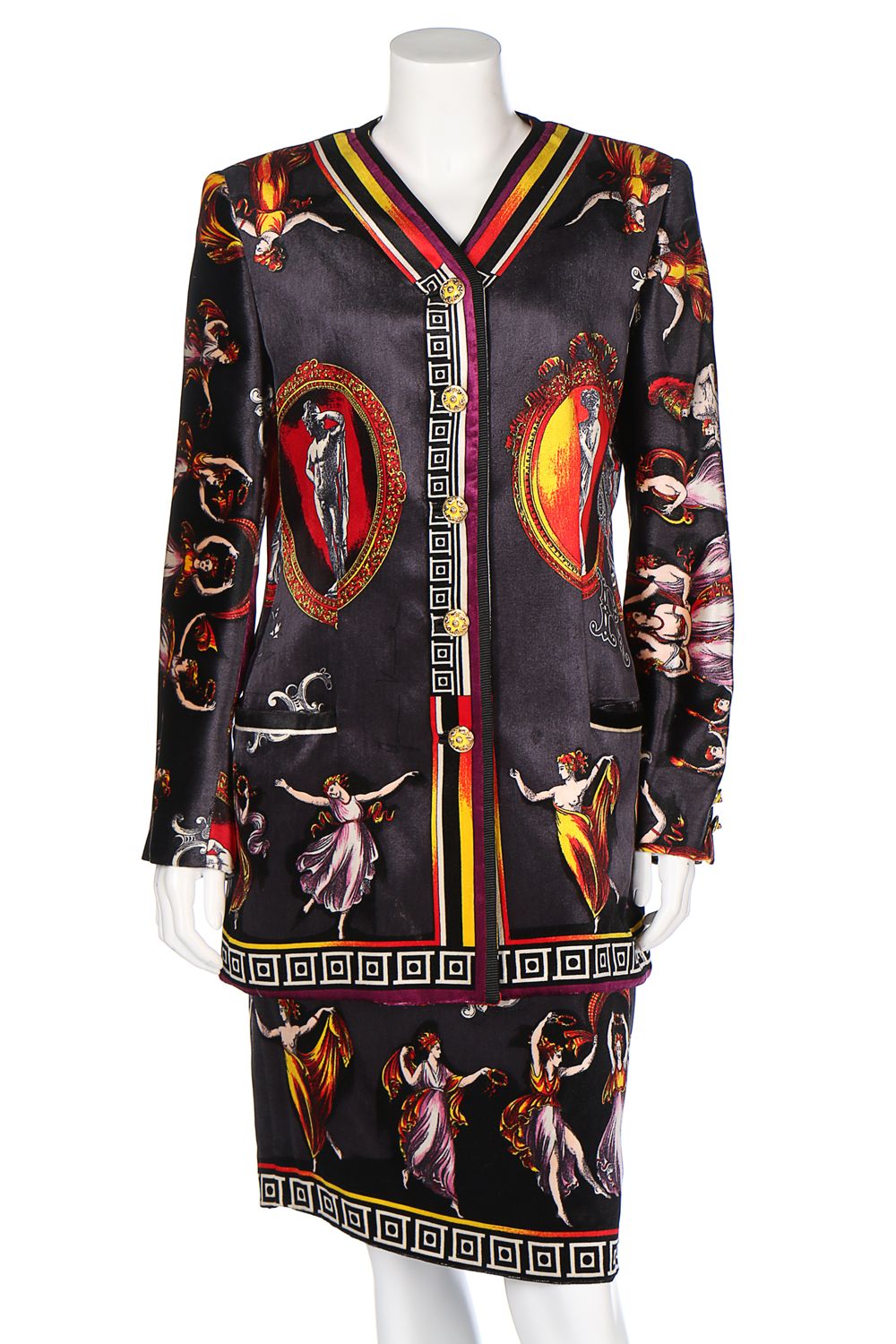Photos of Garment


Example Photos
-Mules, Shoes, 15-16th century, Artist Unknown- Made from leather and velvet with embroidery
-Womans Hat, 1950, American artist-Made from straw and velvet
-Cocktail Suit, 1991-92, Gianni Versace -Velvet with gilt buttons
-Velvet dress, 1975-79, England house in business- Velvet
Berg Database
“Radical Decadence, Excess in contemporary feminist textiles and craft” by Julia Skelly. This chapter discusses how British artist Roxanne Hawksley uses items representing decadence, death and mortality in her works. These works often feature items made of velvet as a fabric that is considered to be luxurious and littered throughout royal portraits. Skelly describes how the artist explicitly juxtaposes decadent luxury fabrics like velvet with objects representing death and decay, creating intersections of poilital, visual, and material culture.
Fabric Savvy – Tips!
Velvet can be used from pants to dresses to even jackets. It can be a difficult fabric to work with, especially when using microfiber velvet as that does not exactly press well and may be difficult to control. When working with velvet, it is important to note that holes do not come out! That means you should pre-test your pattern and even have a sample swatch to see how the fabric reacts.
When sewing, the fabric needs to be relaxed every couple of inches. This means you should lift the foot and both layers or pieces of velvet to be able to sew evenly on it. Lastly, it is suggested to use double sided tape/adhesive to hold the fabric together when sewing, remembering to not sew on the tape but next to it.
Bonus:
Before the introduction of synthetic fibres in the 20th century, velvet was made from silk, which was very expensive and only accessible to those with high levels of wealth. It originate in 750 AD in Bagdad, before it made its way to the Mediterranean and the rest of Europe.



